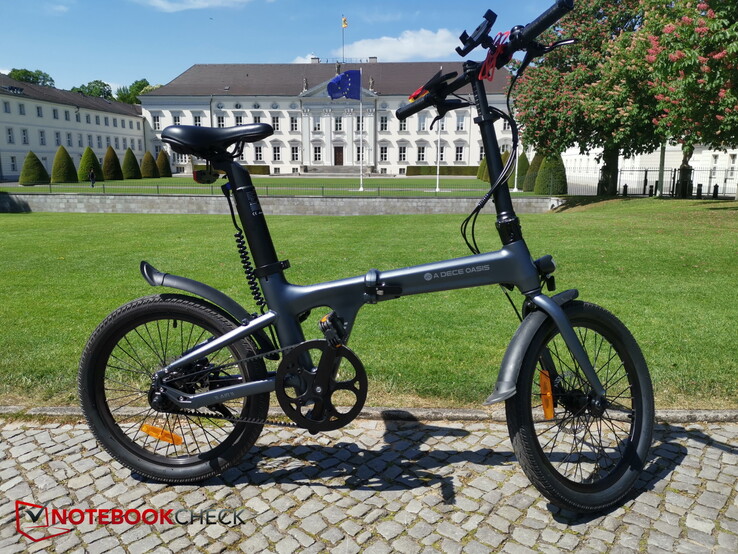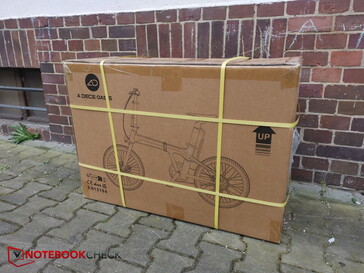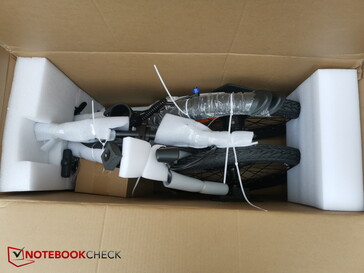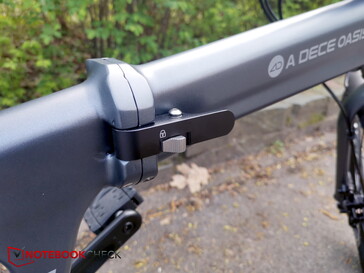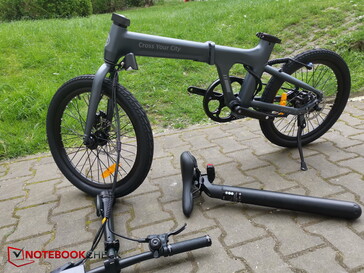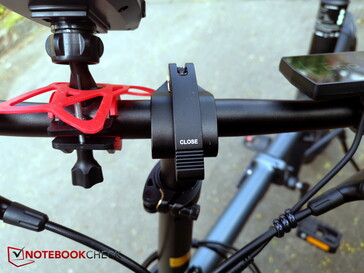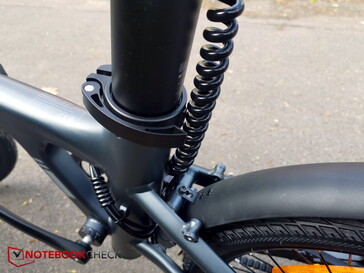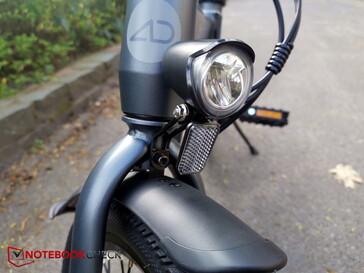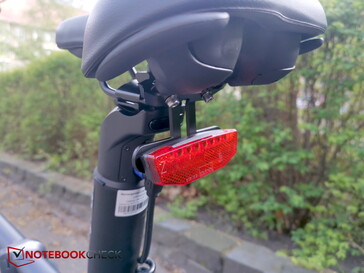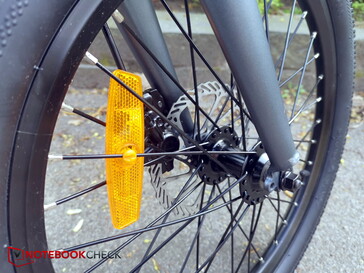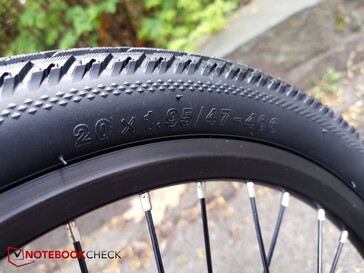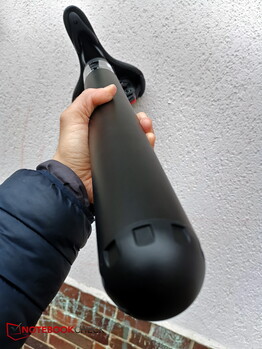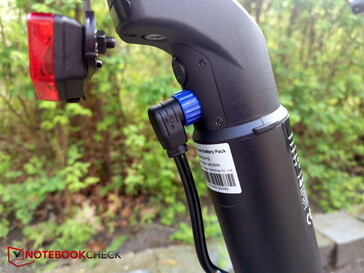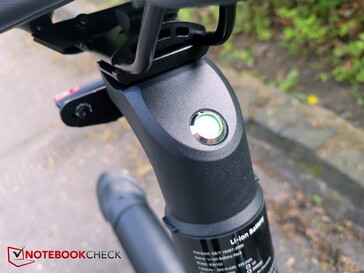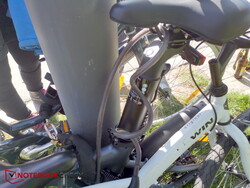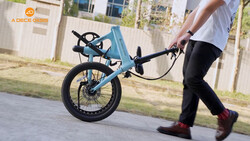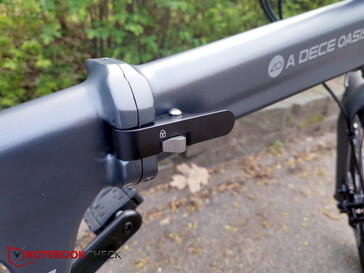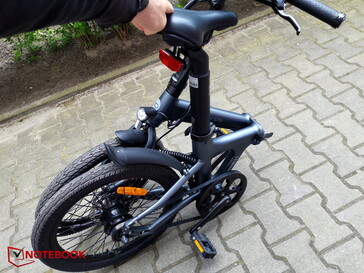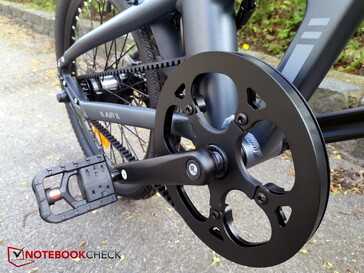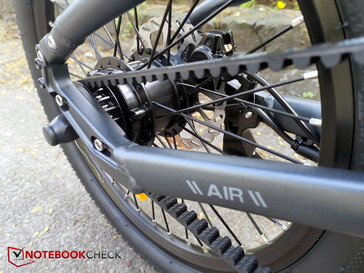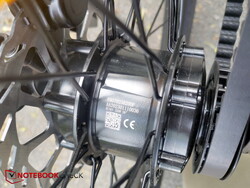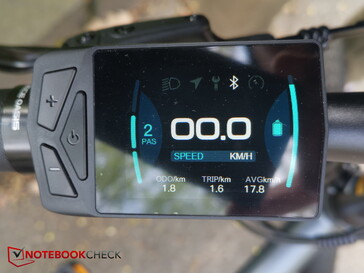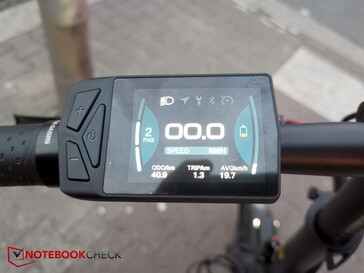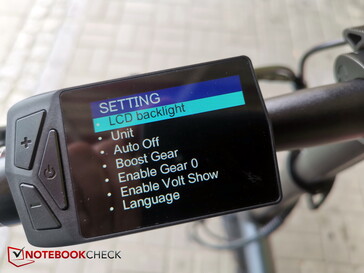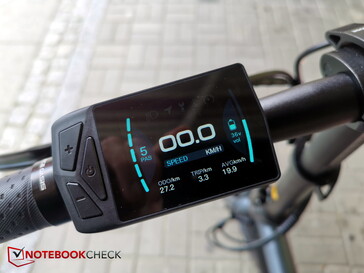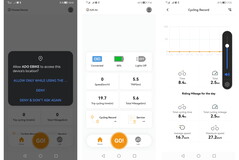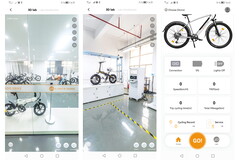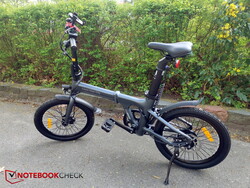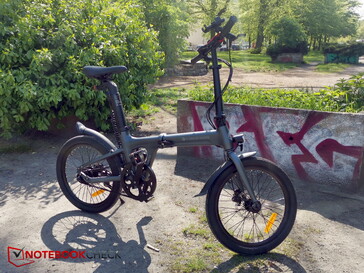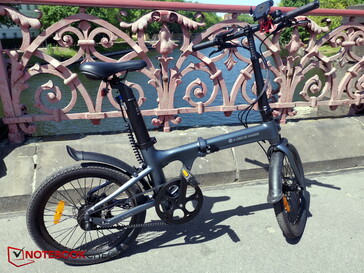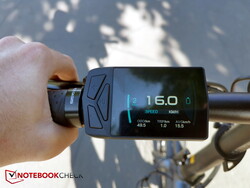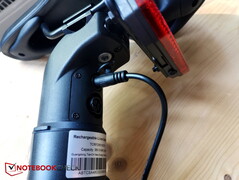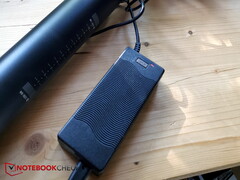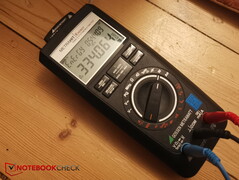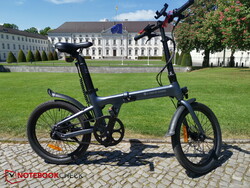ADO Air 20 eBike review: A fun & agile foldable city bike with belt drive
The ADO Air 20 is no normal pedelec - it isn't a true replacement for a completely "manual" bike, which you can use to transport your child and your shopping. The ADO Air 20 is an uncomplicated, agile speedster for short trips around the city. While caravan owners might also find the foldable bike handy, usually, this bike would be seen more as a lifestyle product for hipsters and younger people who might want to take their bike on the train with them for free - or take it out on a quick spin to grab lunch before heading back to the office.
Of course, the Air 20 is able to conquer longer trips as well, as the large battery supposedly has a range of up to 100 km. We will be taking a look at what makes the Air 20 such a fun product, and what improvements the bike with e-assistance could maybe do with. How convenient that we recently reviewed another foldable pedelec, the PVY Z20 Pro.
ADO initially financed the Air through an Indiegogo campaign, but now you can also pre-order the bike on their website. It will supposedly be delivered as of the current month May. ADO's website also offers a further six eBike models.
Assembly - quick thanks to lots of quick-release levers
Due to the Air 20's folding mechanism, not many parts had to be taken off the bike for it to be shipped - usually, this isn't the case for other bikes in order for them to still fit in the box. Even the Air's pedals can be folded in and both wheels come pre-attached. This means the hydraulic disk brakes come well preset.
After removing the usual padding, you just have to unfold the bike and screw on the handlebar. It takes a further few seconds to screw on the plastic guards and then everything else can be assembled using quick-release mechanisms. This includes rotating the handlebar and setting its height, as well as putting the seat on. And then you're done!
As is often the case with eBikes, its light situation proves to be interesting: While the front lamp is attached to the battery, the rear light is an external lamp which requires its own battery. The manufacturer stresses how this is a safety measure: The rear light should always be on and functioning - even if the battery is empty - so that you can still be seen.
However, you aren't actually allowed to cycle in the dark without your lights on anyway. This means as soon as the battery dies and the front lamp switches off, you have to push the bike. Of course, the rear light will still mean you will remain visible (assuming this battery still has some power), but who pushes their bike on the road? We find the need for a separate lamp a bit of an inconvenience, as it means having to charge a second battery.
Components & design - battery seat and belt drive
Battery
Speaking of seats: The ADO does this a slightly different way, namely its long and thick seat post also houses the 365.5 Wh Samsung battery.
This has advantages as well as disadvantages: It's a good thing that the battery doesn't hang anywhere on the frame and that no water can get into the spaces when you remove it. A disadvantage is, however, how big the seat bar is as a result and of course you shouldn't really be placing too heavy a load onto it.
You will likely not be looking to attach a children's seat to a foldable bike anyway, but ADO do offer two versions of a luggage rack, which cost around $54 and $77.
Ah yes, another avoidable disadvantage which concerns us: Because there is no way to secure the seat and it can be removed easily and quickly using the quick-release lever, we were worriedly racking our brains about how we could protect the battery from potentially being stolen.
So our plea to ADO Bikes: Please install some kind of security system for the quick-release levers or the seat post. It could, for example, snap into place or at least be secured by an additional little folding lock. Currently, you are sort of forced to bring a second, thin lock for the seat or to carry the battery and seat around with you all the time - or to thread the main lock through the tight space underneath the seat as well, which would secure the bike and seat at the same time. The assumption is, of course, that the length and thickness of your lock allow for this.
Frame
The bike's sleek frame is mostly made of aluminum and is available in the colors ivory, blue and gray. The wheel rims are also made of aluminum. In total, the Air 20 weighs in at 16 kg or 18 kg including the battery. In comparison, the PVY Z20 Pro - which we also tested - weighs 22 kg. It does, however, have a suspension fork, which the Air doesn't have.
Of course, its folding mechanism is special. For this purpose, a quick-release lever with a security lock sits in the middle. Additionally, you can fold down the handlebar, fold in the pedals and set the seat to the lowest height. This makes the bike easy to store in the trunk of your car - or you can take it on the train with you for free, as it counts as hand luggage.
Here, the walking mode comes in handy. If you press and hold the "-" button, the bike wheels itself at a walking pace - even if it is folded together. This means you can easily push the bike up a hill or off the train.
When you unfold the bike, you have to pay attention to the two cables on the inside of the frame - the thin one especially has a tendency to get trapped. It is easiest if you just move it to the side using your hand before you unfold the Air completely.
Motor
One unique aspect is, of course, the bike's belt. This saves on weight compared to a chain, doesn't require much maintenance and you don't have to fight with grease and jammed trouser legs. A disadvantage could possibly be how easy it is to vandalize (scissors, knife) compared to a chain.
Its motor with torque sensor sits within the back wheel and in the CE version, it has a power of 250 watts. The international version has 100 watts more. It is interesting that ADO didn't go for an option to shift gears on the Air 20 - as a result, the bike is lighter and doesn't require as much maintenance. When it comes to the pedelec's motor support which is only up to 25 km/h, this shouldn't be too big a problem. Although, you will want to ride the Air a little more leisurely due to its one-gear concept, as you do have to pedal quite frequently if you are going faster than 20 km/h. This means you likely won't even want to try to cycle faster than the 25 km/h that the bike supports.
To stop, you simply use the Air's hydraulic brakes, which come well pre-installed.
Display
The display is in color and is IPX7 certified, meaning it is waterproof. You can see everything important at a glance, so you don't have to click through a bunch of menus - very good! Next to an (if a bit rudimentary) battery display, it also shows the speed, support mode, trip distance, total distance, light and Bluetooth status, and possible faults.
Thankfully, the total distance is even saved when the battery is empty. There is even a USB-A port on the bottom of the bike, which you can use to connect your smartphone, for example.
In terms of display functions, the manual is unfortunately very minimalistic - for example, we couldn't even find out how to switch the light on (press and hold "+"). It also doesn't mention anything about the menu (press and hold "+" and "-" together): Here, you can choose to show 5 instead of 3 support modes, change the language and background light, and much more.
The app - Cool, but unfinished
The display does actually show most of the important information already - but connecting to the "Smart App" can show you even more cycling stats or you can contact the manufacturer in the event of a fault.
Unfortunately, the app isn't quite finished - quite a few functions or buttons still lie empty. A cool feature is the trip to ADO's test laboratory. Here, the app offers a virtual tour around the lab where you can see information about the bikes at all the different test stations - quite cool.
Reach and practical test - Great support but only half of the reach
Enough theory. How does it feel to ride the eBike and how long does the battery last? Riding the bike feels fun, as it appears to be totally uncomplicated. Its motor support is almost instantaneous and never cuts out. The manufacturer has managed to a create trouble-free motor support with just the right amount of trailing and without any noticeable delay when you start pedalling again.
The fact that you don't have to change gears also adds to how fun and uncomplicated this bike is - you just sit on it and start cycling away. With the highest level of motor support, you can cycle at 25 km/h, but the pedal frequency is quite high. When pedalling, your feet can sometimes feel a bit of vibration - this is likely from the belt.
The handbook suggests you can only reach 20 km/h (level 2) or 15 km/h (level 1) at the lower levels. Thankfully, this isn't true, as we managed to reach speeds of 25 km/h at all the levels - just with differing levels of support. We preferred level 2 the most, as you reach the 25 km/h limit too fast at level 3.
You feel particularly speedy and agile on the Air 20 due to its compact size, uncomplicated belt and good acceleration even at level 2. The seating position is very comfortable, as you can also change the handlebar's height. This means you can speed around town and have fun doing so. However, the seat itself could be a little more comfortable. And if the road is bumpy you do miss having a suspension.
For the range measurement, we drove on the medium level 2 most of the time - we only occasionally briefly set it to level 3 (cycling up a bridge) or sometimes a bit longer to level 1 (cycling next to my child on the way to daycare). ADO states a range of up to 100 km. This figure refers to a laboratory measurement with a weight of 65 kg, using level 1 80 per cent of the time and level 2 only 20 per cent of the time. For us, the ratio of level 1-2-3 should be around 10-85-5 per cent.
Cycling in this way, we barely managed 50 km. That's okay, but also not outstanding and far from the stated 100 km in realistic use.
Pros
Cons
Verdict - Fun, fun, fun
The ADO Air 20 is an agile and uncomplicated eBike with lots of potential for having fun. If necessary, you can attach a luggage rack for an additional $54 - then the city speedster can handle heavier loads. But you really want to use the Air 20 for uncomplicated fun. The small bike has great motor support which is so quiet and natural-feeling that you sometimes forget it's even there when you're swinging around corners or you start pedalling at traffic lights.
We don't have many points to critique. We would love to see theft protection for the battery, as you can't lock it. It's a little strange that the reach is rather 50 km than the stated 100 km in realistic use - but this is just a marketing gag used by many manufacturers who always try to offer more with unrealistic stats.
The ADO Air 20 is a small, agile, fast, uncomplicated and well-set city speedster which is just fun to use. It is only the battery without theft protection which worries us a little.
Price and availability
On ADO's website, you can currently preorder the Air 20 for around $1,599. The bikes are supposed to be shipped out beginning in May 2023.
Transparency
The selection of devices to be reviewed is made by our editorial team. The test sample was provided to the author as a loan by the manufacturer or retailer for the purpose of this review. The lender had no influence on this review, nor did the manufacturer receive a copy of this review before publication. There was no obligation to publish this review. As an independent media company, Notebookcheck is not subjected to the authority of manufacturers, retailers or publishers.
This is how Notebookcheck is testing
Every year, Notebookcheck independently reviews hundreds of laptops and smartphones using standardized procedures to ensure that all results are comparable. We have continuously developed our test methods for around 20 years and set industry standards in the process. In our test labs, high-quality measuring equipment is utilized by experienced technicians and editors. These tests involve a multi-stage validation process. Our complex rating system is based on hundreds of well-founded measurements and benchmarks, which maintains objectivity. Further information on our test methods can be found here.




